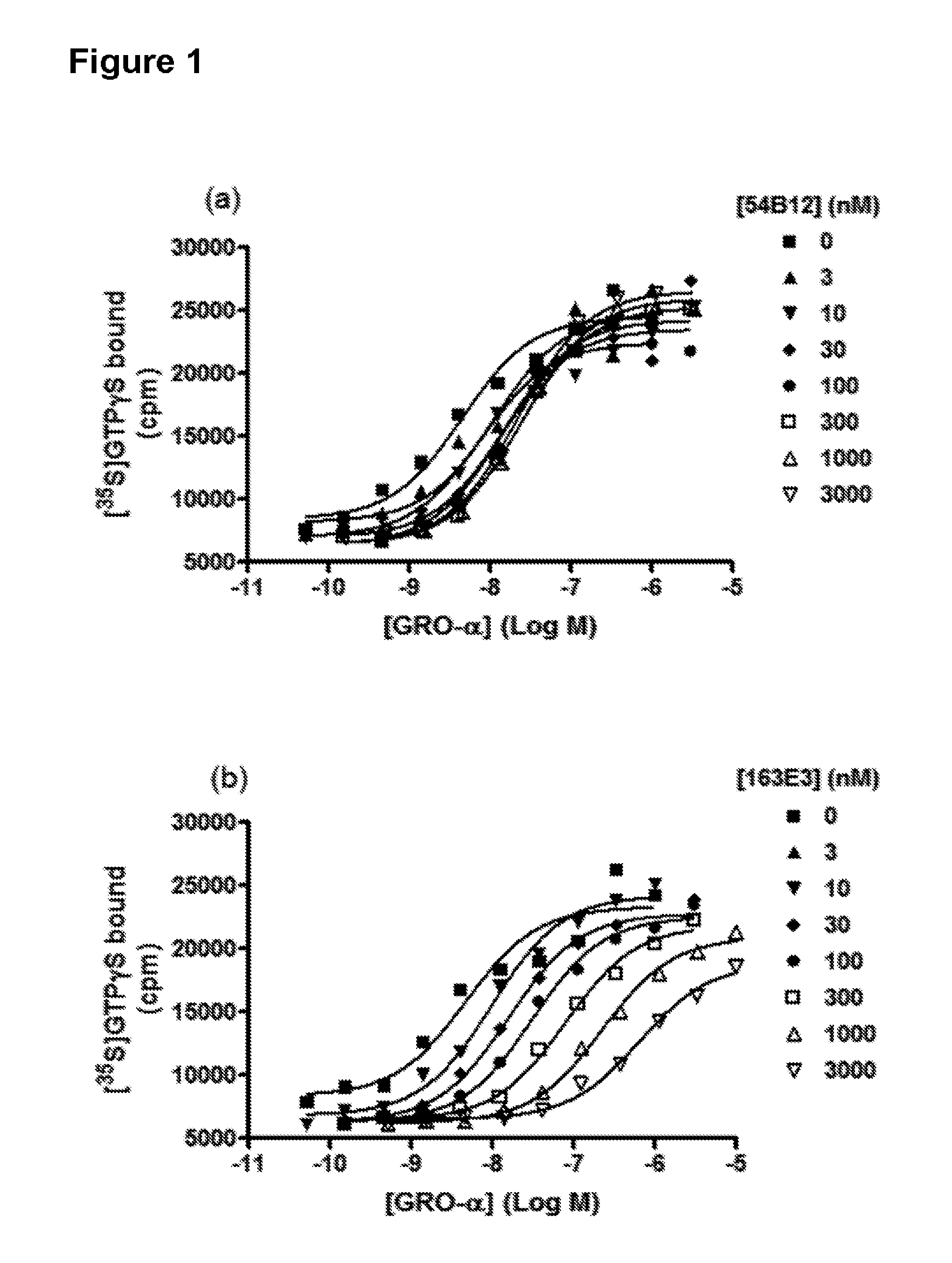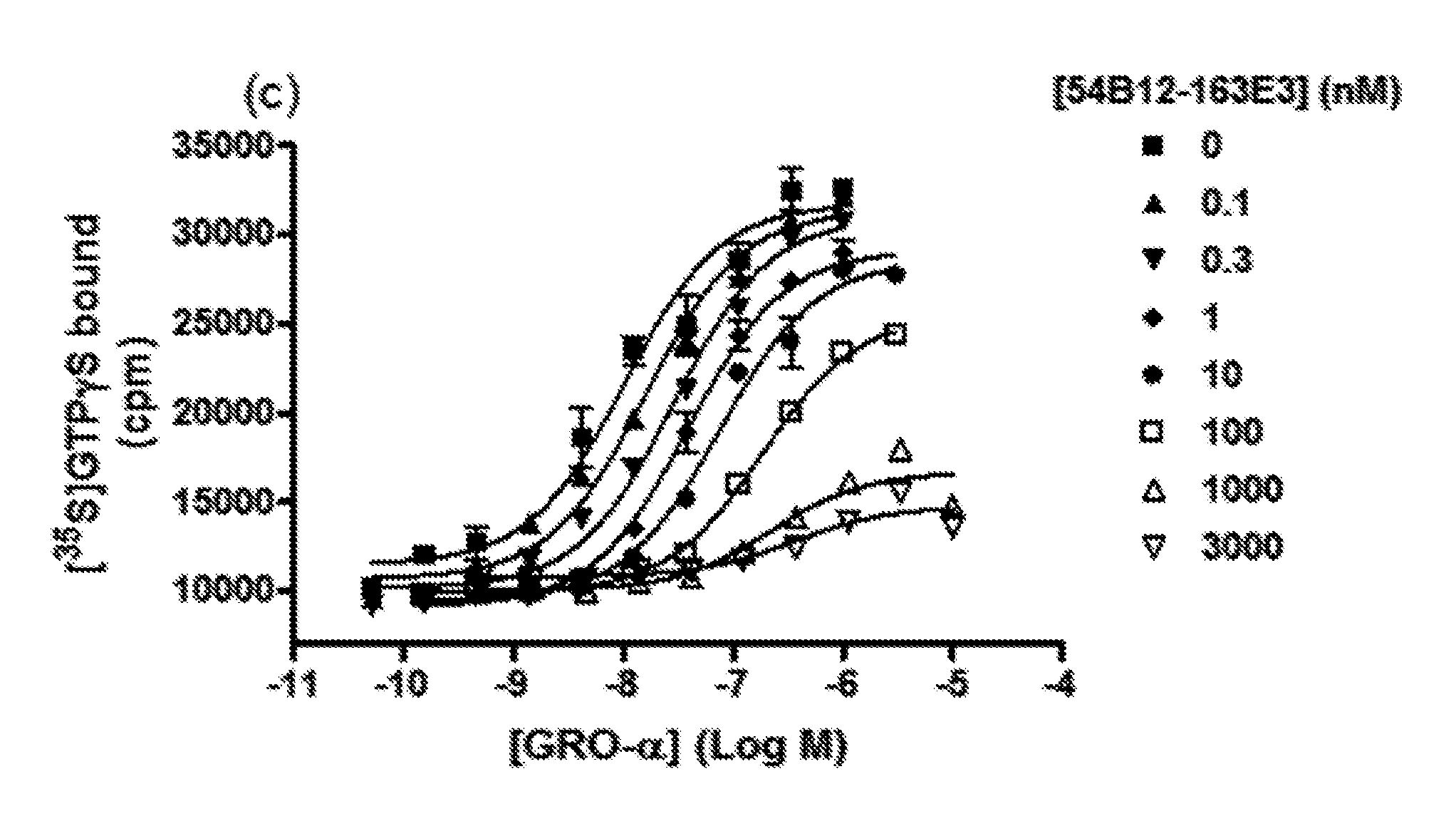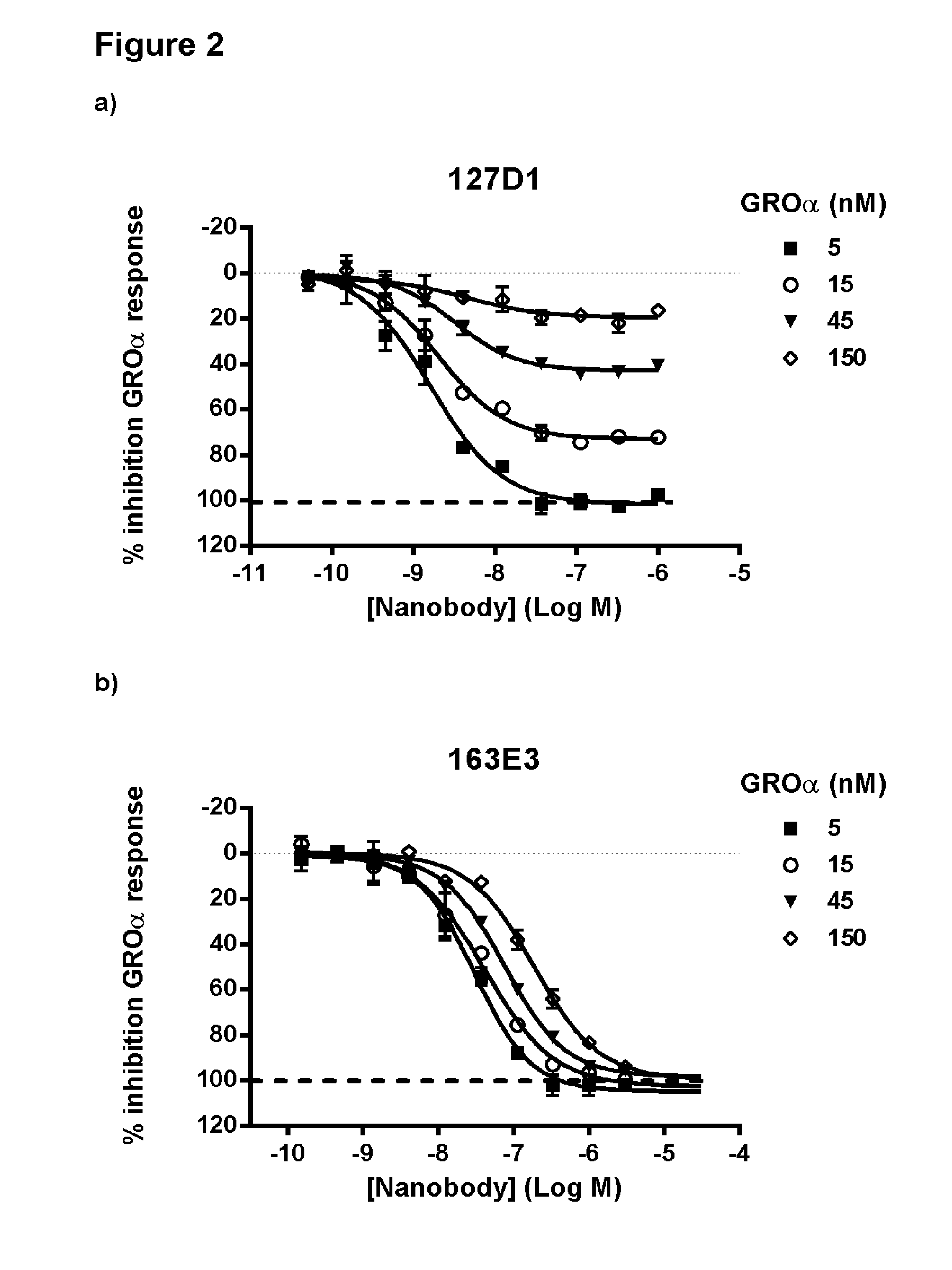Chemokine receptor binding polypeptides
a technology of chemokine receptors and binding polypeptides, which is applied in the introduction of peptides/proteins, antibody medical ingredients, and vector-based foreign material introduction, etc., can solve the problems of receptor desensitization, no therapies available to stop the decline of lung function or the progressive destruction of lung function
- Summary
- Abstract
- Description
- Claims
- Application Information
AI Technical Summary
Benefits of technology
Problems solved by technology
Method used
Image
Examples
Embodiment Construction
[0076]In a first aspect the invention provides a polypeptide comprising two immunoglobulin antigen binding domains, which polypeptide is directed against or binds to chemokine receptor CXCR2, wherein said first antigen binding domain is comprised within a first VHH domain or fragment thereof from a single heavy chain of a heavy chain antibody derived from a Camelid or is a sequence-optimised, including humanised, variant thereof, and said second antigen binding domain is comprised within a second VHH domain or fragment thereof from a single heavy chain of a heavy chain antibody derived from a Camelid or is a sequence-optimised, including humanised, variant thereof and wherein the C-terminal of the polypeptide comprises an extension to the sequence of the antigen binding domains of at least one additional amino acid residue; and wherein the first antigen binding domain is recognising a first epitope on CXCR2 and the second antigen binding domain recognising a second epitope on CXCR2....
PUM
| Property | Measurement | Unit |
|---|---|---|
| Fraction | aaaaa | aaaaa |
| Molar density | aaaaa | aaaaa |
| Molar density | aaaaa | aaaaa |
Abstract
Description
Claims
Application Information
 Login to View More
Login to View More - R&D
- Intellectual Property
- Life Sciences
- Materials
- Tech Scout
- Unparalleled Data Quality
- Higher Quality Content
- 60% Fewer Hallucinations
Browse by: Latest US Patents, China's latest patents, Technical Efficacy Thesaurus, Application Domain, Technology Topic, Popular Technical Reports.
© 2025 PatSnap. All rights reserved.Legal|Privacy policy|Modern Slavery Act Transparency Statement|Sitemap|About US| Contact US: help@patsnap.com



